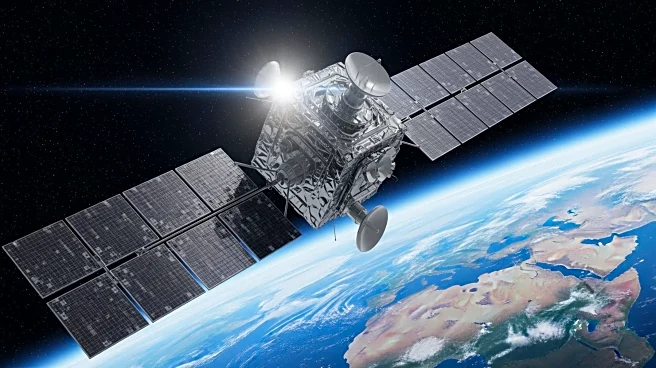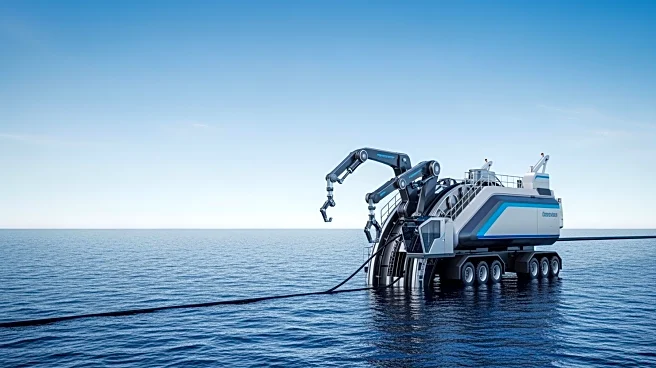What's Happening?
Space42, a UAE-based company, has announced the global availability of its Thuraya-4 satellite, which is designed to enhance IoT and direct-to-device (D2D) satellite services. The satellite, operating
on the L-band spectrum, is built on the Airbus Eurostar Neo platform and features a 12-meter reflector antenna, onboard processing, and a software-defined architecture. This allows for dynamic bandwidth allocation and remote software updates to reconfigure coverage. Thuraya-4 aims to integrate seamlessly with terrestrial networks, supporting Space42's plans to offer services based on the 3GPP’s Non-Terrestrial Network (NTN) standard. The satellite will serve customers in Europe, Africa, Central Asia, and the Middle East, with new markets including South Africa, Namibia, Botswana, Mozambique, and Zambia.
Why It's Important?
The launch of Thuraya-4 represents a significant advancement in satellite technology, particularly in the IoT and D2D sectors. By providing enhanced connectivity and integration with terrestrial networks, Space42 is positioned to lead in non-terrestrial network services. This development is crucial for industries relying on reliable communication systems, such as broadband mobility, offshore operations, and aircraft connectivity. The satellite's capabilities could drive innovation in these sectors, offering new opportunities for businesses and governments to improve operational efficiency and expand their reach. The UAE government has already committed to a 15-year contract valued at $708 million, underscoring the strategic importance of this satellite in regional and global communications.
What's Next?
Space42 plans to offer 16 new products through Thuraya-4, including broadband mobility solutions, mobile gateways, and tactical transceiver systems for UHF/VHF communications. These offerings are expected to enhance communication capabilities across various environments, including land, sea, and air. The company aims to strengthen its leadership in non-terrestrial networks, translating its long-term vision into commercial growth. As Thuraya-4 becomes operational, Space42 will likely focus on expanding its customer base and exploring new markets, potentially influencing the global satellite communications landscape.
Beyond the Headlines
The integration of satellite and terrestrial networks through Thuraya-4 could have broader implications for global connectivity, particularly in remote and underserved regions. This technology may facilitate access to critical communication services, supporting economic development and social inclusion. Additionally, the satellite's software-defined architecture represents a shift towards more flexible and adaptive communication systems, which could set new standards in the industry.













